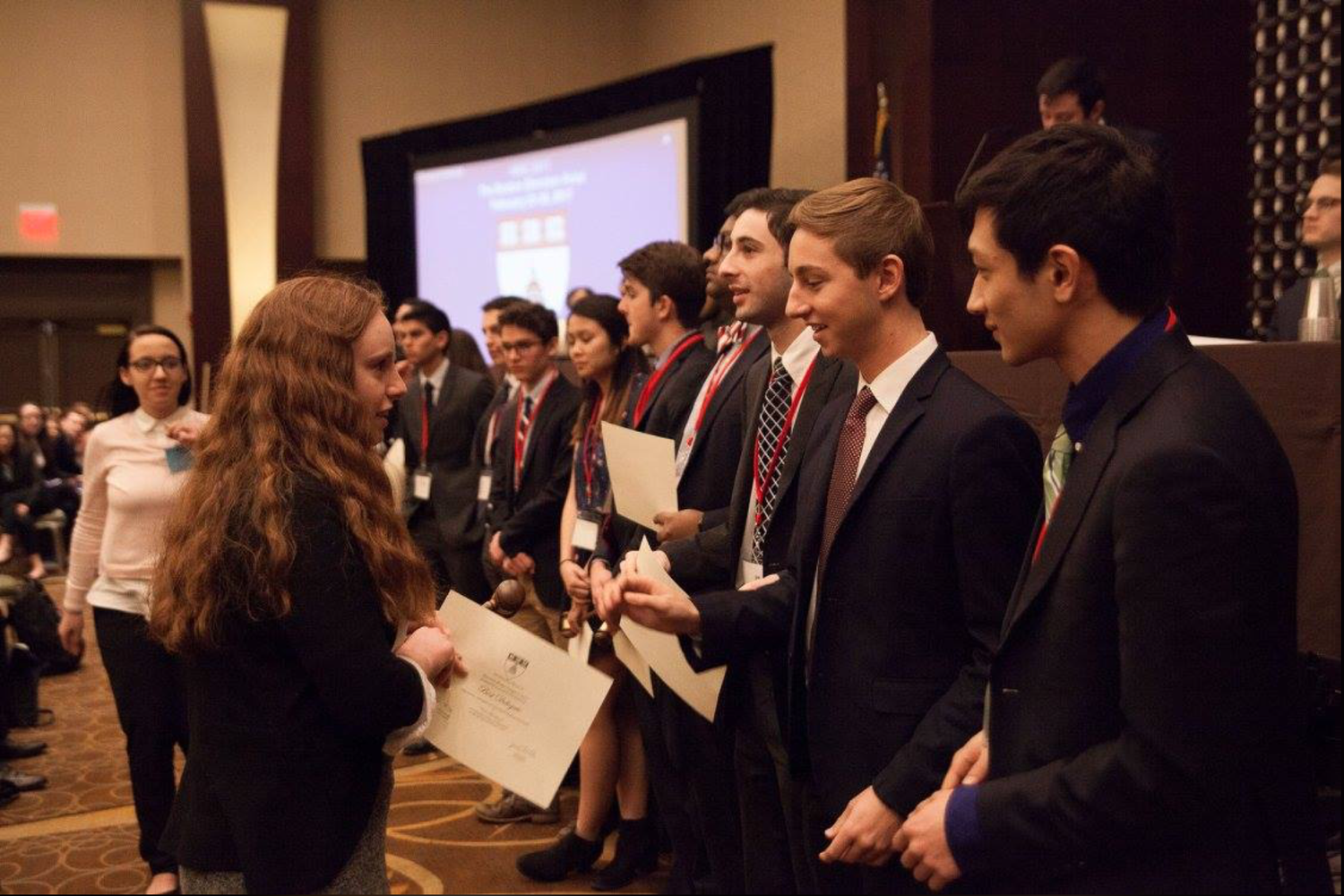
News
Progressive Labor Party Organizes Solidarity March With Harvard Yard Encampment

News
Encampment Protesters Briefly Raise 3 Palestinian Flags Over Harvard Yard

News
Mayor Wu Cancels Harvard Event After Affinity Groups Withdraw Over Emerson Encampment Police Response

News
Harvard Yard To Remain Indefinitely Closed Amid Encampment

News
HUPD Chief Says Harvard Yard Encampment is Peaceful, Defends Students’ Right to Protest
Disparities in Debate, at Harvard and Beyond

Every winter, thousands of high schoolers descend on the halls of the Sheraton Boston Hotel to participate in a series of esteemed high school speech and debate conferences hosted by Harvard student groups: Harvard Model United Nations and Harvard Model Congress.
These conferences are widely regarded as some of the most prestigious and competitive of their kind. As a high school debater myself, I eagerly awaited the HMUN conference, which my school’s team attended each January. Although competition was tough, nothing could ever beat the satisfaction of coming home from Boston with a gavel — the prize given to each winner — in hand.
While my experience with high school debate provided me with invaluable knowledge of public speaking and leadership, not everyone has the opportunity to participate in speech and debate equitably. Across the circuit, race and gender-based discrimination often takes place between competitors.
At a conference my freshman year, I watched as several white male competitors excluded an East Asian female from collaboration because she “had coronavirus.” My junior year, I watched as my teammates exchanged racially insensitive messages over Snapchat.
Though these incidents did not occur at Harvard conferences, they are reflective of larger patterns of discrimination faced by minority debaters, which can bias success in an activity with high stakes for college admissions and beyond.
Female high school students are around 30 percent more likely to quit speech and debate than their male competitors — a disparity likely exacerbated by the increased discrimination they face on circuits. Speech and debate also has a long history of excluding participants of color.
Owing to their preeminence, HMUN and HMC are uniquely poised to pioneer efforts to equalize inequities within high school speech and debate.
Already, Harvard speech and debate conferences have made efforts at diversity, equity, and inclusion. HMUN and HMC have, admirably, established annual scholarship initiatives for competitors, and HMC runs a free mentorship program for local Boston high schools.
Still, they can go further. HMUN and HMC both have anti-discrimination policies, but more needs to be done to improve their enforcement. To ensure students feel respected in these spaces, organizations should reevaluate the mechanisms they have for intervening in cases of discrimination.
As a competitor, I often felt uncomfortable speaking out against incidents of bias or discrimination due to pressure from my team and fear of judgment from other delegates on my committee. Conferences should adapt their policies to account for these realities faced by minority participants. Given the importance of these competitions, this path towards improvement must be followed with urgency.
Not only would this foster a more inclusive environment for competitors of marginalized identities, but it may also serve to benefit college applicants of color in a post-affirmative action world.
Success on competitive speech and debate circuits is a proven pipeline toward admission to elite institutions of higher education.
Before arriving here, many Harvard students participate in some form of high school speech and debate. The Crimson’s annual survey for incoming freshmen found that more than 27 percent of respondents from the Class of 2027 participated in debate in high school, while approximately 19 percent participated in model United Nations.
Creating a more welcoming environment for talented students of color at speech and debate conferences would improve this important tool for building the resumes of competitors of color and familiarizing them with college students and campuses.
At the end of the day, I am still grateful for the skills I gained from my time in competitive high school speech and debate and for the guidance I received from Harvard students through HMUN. I only ask that these organizations ensure that future competitors of color have the same access to the opportunities for growth and development that I had.
I hope that the paths of competitors of color who come after me are as smooth as possible. I hope that they do not have to worry about more than the next gavel.
Jasmine N. Wynn ’27, a Crimson Editorial editor, lives in Thayer Hall.
Want to keep up with breaking news? Subscribe to our email newsletter.
